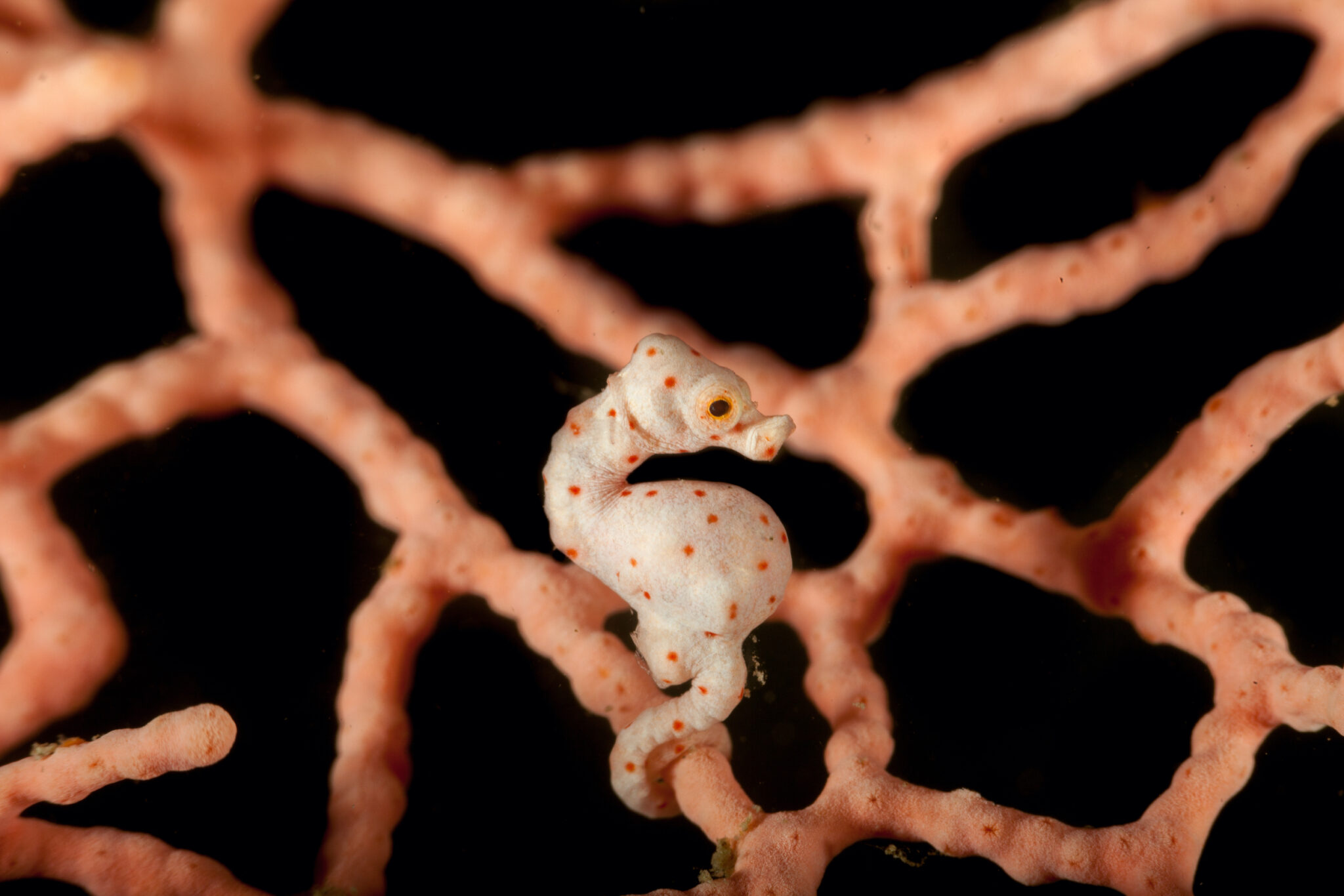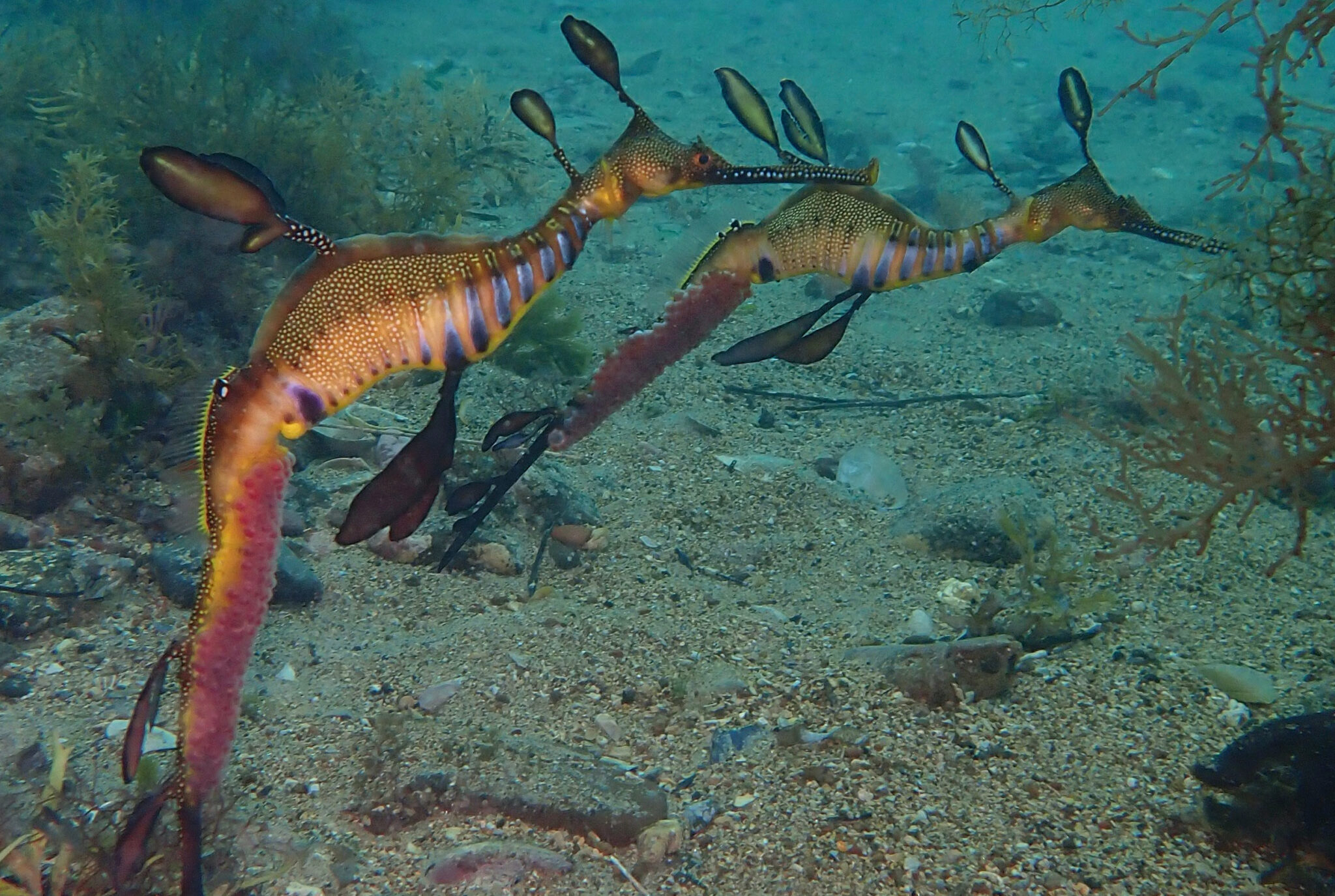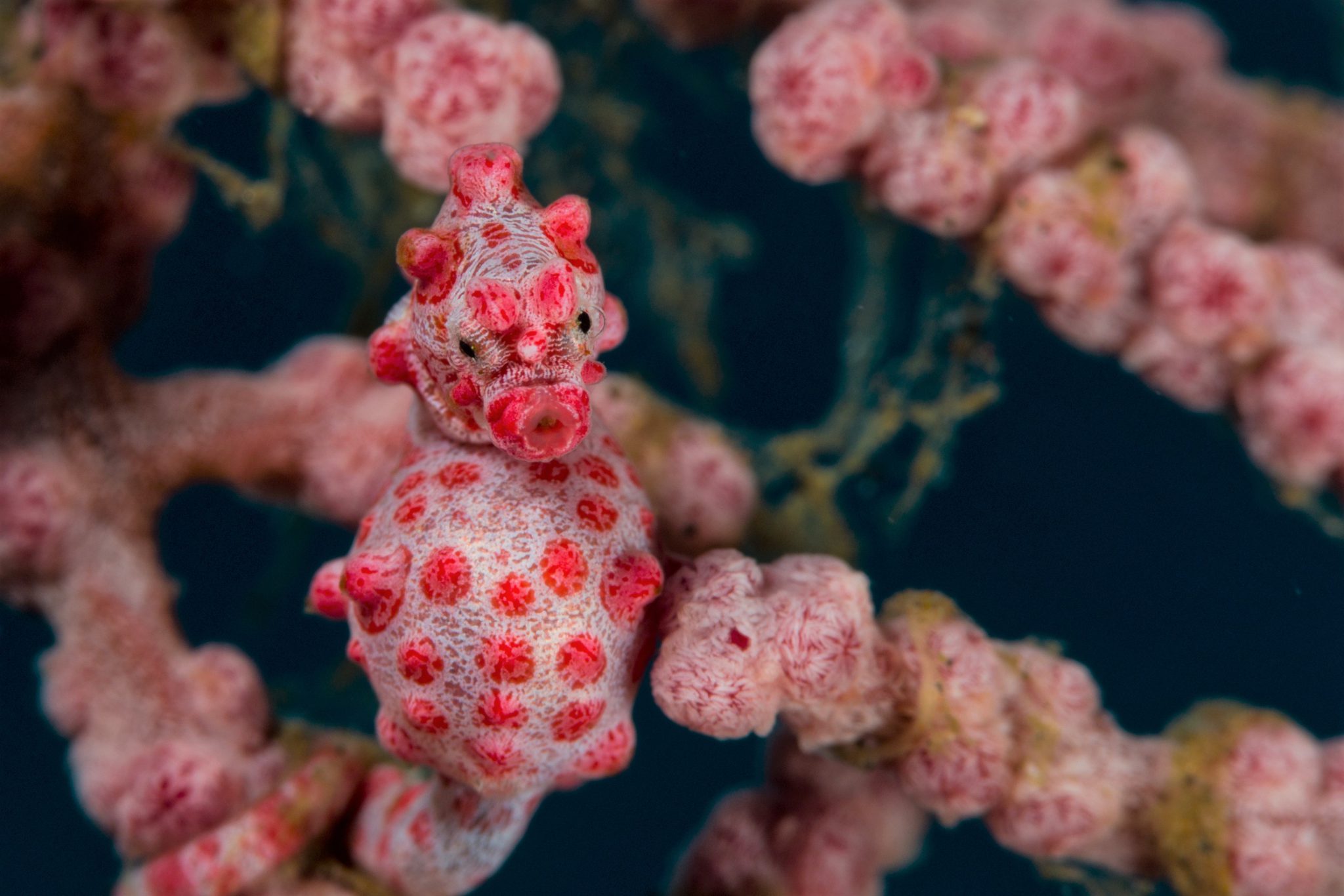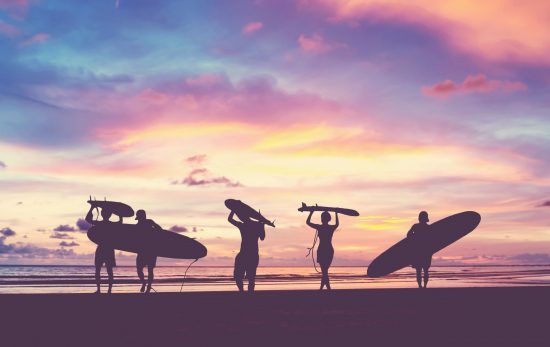There’s no doubt that seahorses are spectacular. Any diver that’s ever been lucky enough to observe a seahorse in its natural habitat will surely agree. Seahorses can change color, move their eyes independently of one another, and even have prehensile tails (like monkeys). The fact that male seahorses also get pregnant and give birth is sure to leave you in total awe of these fascinating fish!
While we celebrate all the scuba diving, freediving, and ocean-loving dads out there, we also want to give a big shout out to the most unique dads that call the underwater world home. In the entire animal kingdom, male seahorses (and their close relatives) are the only male animals that undergo pregnancy and give birth to offspring.

Male Seahorses Get Pregnant and Give Birth
Although male seahorses carry the eggs, they don’t make them. After the male and female seahorses spend time courting, the female deposits her eggs inside the male’s pouch. The male then fertilizes the eggs inside the pouch. Instead of growing their babies inside a uterus like human moms do, seahorse dads carry their babies in a pouch. Their pouch provides oxygen and nutrients, as well as regulates temperature, blood flow, and salinity for the developing eggs.
Depending on the species, male seahorses typically carry their eggs for 2 -4 weeks. Then, they give birth to 100 – 1,000 babies at a time. That’s a lot of adorable, teeny tiny seahorses! Like human moms, seahorse dads give birth through energetically costly muscular contractions. Watch a male seahorse giving birth in the video below:
Male Seadragons and Pipefish Give Birth, Too!
Seahorses, and their close relatives – pipefish and seadragons – belong to the scientific family Syngnathidae. While male seahorses are the only ones that hold developing eggs in a true pouch, male pipefish and seadragons carry developing eggs attached to an area on the underside of their bodies. Through a placenta-like connection, they supply nutrients and oxygen to their young too. For weedy seadragons (pictured below), the eggs start out bright pink and darken as they develop.
Scientists theorize that males in the Syngnathidae family have evolved to carry the babies, because it allows the species to create more babies quickly. Thus, giving the species better chances of overall survival. While the male is bearing the young, the female can prepare more eggs. Then, she can implant the eggs in the male soon after he gives birth. This method of reproduction also seems to distribute energy costs more evenly between male and female.
While male seahorses, pipefish, and seadragons don’t exactly win any dad of the year awards, the fact that they are the only male animals in the world that get pregnant and give birth definitely deserves some recognition.

Will Seahorses Have a Bright Future?
While seahorse dads really go the extra mile to give birth, there’s no parental care offered to their tiny offspring once they’re born. It’s important to note that due to the protection during pregnancy seahorse dads provide, the survival rate of baby seahorses is actually fairly high. Most other fish parents abandon their eggs immediately after fertilization.
Male seahorses are clearly putting in a lot of effort to keep their species thriving. Unfortunately, many human-caused threats face seahorse populations. There are three primary reasons why seahorse populations are at risk worldwide:
- Legal and illegal trade of dried seahorses for souvenirs and medicine
- Wild capture of live seahorses for the aquarium trade
- Accidental bycatch of seahorses in shrimp fisheries.
The good news? In addition to not supporting the harmful actions noted above, here are three ways you can help create a brighter future for seahorses (and their relatives):
- Learn more about the conservation status of seahorses and their relatives via the IUCN.
- Support seagrass restoration efforts to protect important seahorse habitats.
- Deepen your commitment to ocean conservation by joining the PADI Torchbearer Community.

The Best Places to Dive With Seahorses
It’s widely known in the diving community that seahorses are quite elusive. However, there are higher chances of spotting them in some places when compared to others. Listed below we’ve picked a few of the best places to dive with seahorses, as told to us by current PADI Instructors.
The Bay Islands, Honduras
Located off the coast of Honduras, you’ll find three separate islands: Roatan, Utila and Guanaja. If you search the shallow, warm, Caribbean waters, you may come across one of these well-hidden beauties. With so many chances to see seahorses around theses islands, it is difficult to point you in one direction. However if you look around the shallow docks of Utila, you’re bound to find one!
Indonesia
The waters around Indonesia are home to many species of seahorses, including the pygmy seahorse, which is one of the smallest seahorse species in the world. Some of the best places to spot seahorses in Indonesia, include the Lembeh Strait, Wakatobi, and Raja Ampat.
Australia
Australia is home to several species of family Syngnathidae, including the leafy seadragon, which is native to the waters around southern Australia. Some of the best places to spot seahorses in Australia include Sydney Harbour, Port Phillip Bay, and Kangaroo Island.
Bayahibe, Dominican Republic
Hidden on the southern coast of Dominican Republic is a small Caribbean town called Bayahibe. With a surplus of warm Caribbean waters, it’s no wonder you can locate plenty of seahorses here. If you visit a site called “Aquarium”, there is almost a guarantee to come across a few of these little critters.
Egypt
The Red Sea is known for its diverse marine life, including several species of seahorses. Some of the best places to spot seahorses in Egypt include the Ras Mohammed National Park, Tiran Island, and the Strait of Gubal.
Philippines
The Philippines is another great destination for seahorse spotting. Some of the best places to see seahorses in the Philippines include Anilao, Puerto Galera, and Apo Island.
St. Thomas, Virgin Islands
Thanks to their unique position in the Caribbean Sea, the Virgin Islands are home to a wide variety of marine life. Divers often spot seahorses off of the southern tip of St Thomas. If you head to a small rock called Saba on the lower end of the mooring lines, you may just spot one of these creatures around that area.
Thailand
The waters around Thailand are home to several species of seahorses, including the tiger tail seahorse and the common seahorse. Some of the best places to spot seahorses in Thailand include the Similan Islands, Koh Phi Phi, and Koh Tao.
Although, these are great destinations for locating seahorses, they are by no means the only places you’ll see them. Keep your eyes open in any tropical or sub-tropical waters, and you might get lucky.

Inspired to dive with seahorses? If you’re not already a certified diver, you can start your PADI Open Water Diver course right now online via PADI eLearning. If you’re already a PADI Diver, ask your local dive shop if seahorses (or their relatives) inhabit waters in your local area. Whether they’re close by or far away, use PADI Travel to plan your next dive adventure.
Inspired to help seahorses while you dive? Download the iSeahorse App to upload your seahorse photos to a database of seahorse images from around the world. This Project Seahorse initiative allows divers to act as citizen scientists. You can provide vital information that contributes to a better understanding of, and the conservation of these incredible fish.


